Natural Gas Fireplace Venting Options
Natural gas fireplace venting options are crucial considerations for homeowners looking to install a gas fireplace. These options impact both the efficiency and safety of the fireplace, as well as how it fits into the home’s design. There are three main venting options for natural gas fireplaces: direct vent, ventless (also known as vent-free), and B-vent. Each system offers its own set of advantages and potential drawbacks depending on the layout of the home, the desired heat output, and installation preferences. Choosing the right venting option requires an understanding of how each system works, its suitability for different spaces, and any relevant safety or code considerations.
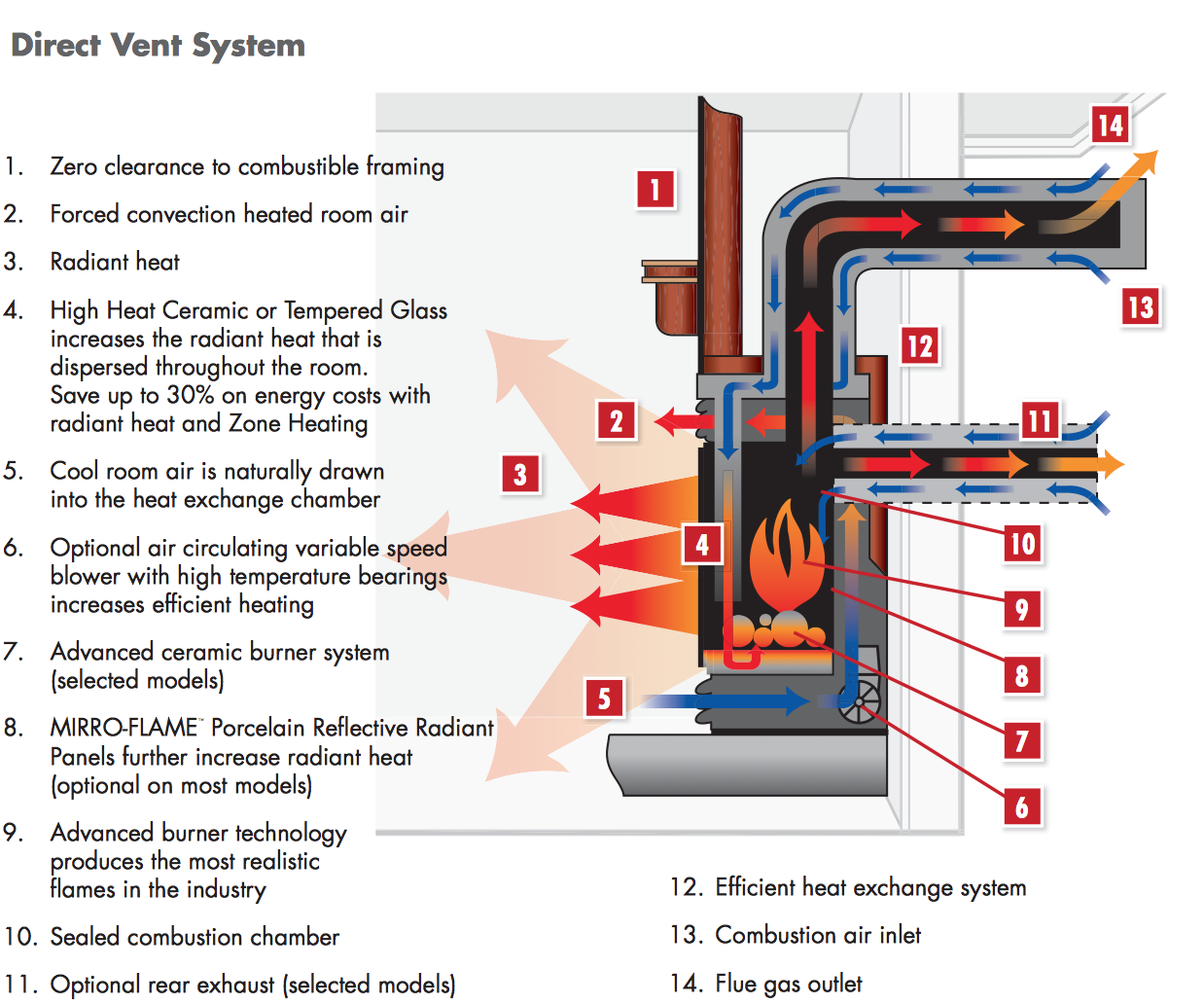
Direct vent fireplaces are one of the most popular choices for homeowners because they offer a balance of efficiency, safety, and flexibility. These systems use a sealed combustion chamber, which draws air from outside the home for combustion and expels exhaust gases back outside through a dual-chambered pipe. This system is highly efficient because it doesn’t rely on indoor air for combustion, which helps to maintain indoor air quality and prevents drafts. The sealed system also makes direct vent fireplaces safer, as it reduces the risk of carbon monoxide or other dangerous gases leaking into the home. Because of the flexibility in vent placement (the vent can be run horizontally through an exterior wall or vertically through the roof), direct vent fireplaces can be installed in a variety of locations, including rooms without an existing chimney. This makes them a popular option for both new construction and remodeling projects.
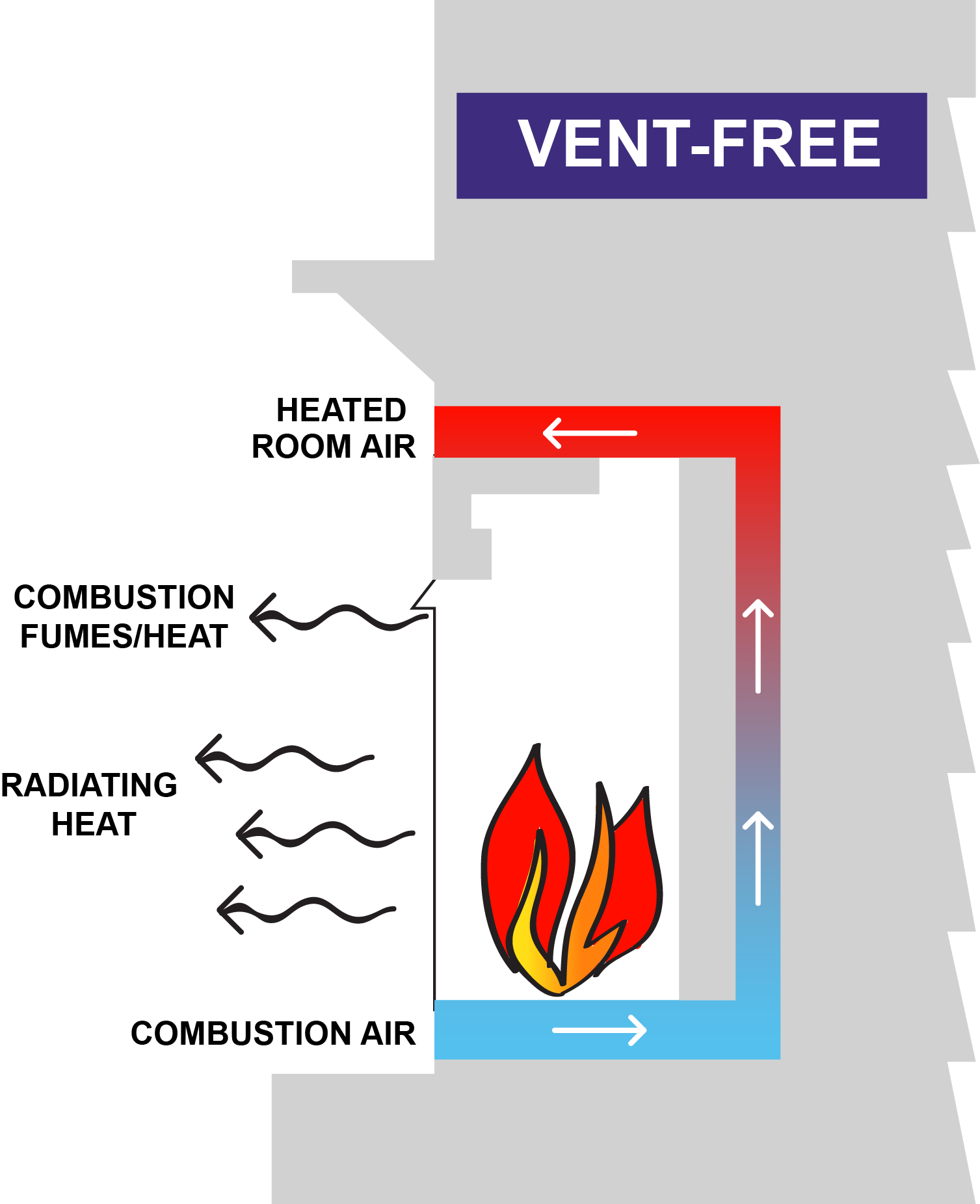
Ventless (vent-free) gas fireplaces, on the other hand, offer the ultimate convenience when it comes to installation because they don’t require any external venting. These fireplaces are designed to burn gas so efficiently that almost all the combustion by-products are burned off, meaning there’s no need to vent gases outside. This allows ventless fireplaces to be installed in virtually any room, including spaces where traditional venting would be impossible or costly. While this option is extremely convenient and provides excellent heat output since no heat is lost through venting, there are some concerns about air quality. Ventless fireplaces release small amounts of combustion by-products, such as carbon dioxide and water vapor, directly into the room. While they are equipped with safety features like oxygen depletion sensors to shut off the fireplace if oxygen levels drop too low, homeowners need to be mindful of ventilation in the room and may want to avoid using ventless systems in smaller or tightly sealed spaces. Local building codes may also restrict or regulate the use of ventless fireplaces, so it’s important to check regulations before choosing this option.
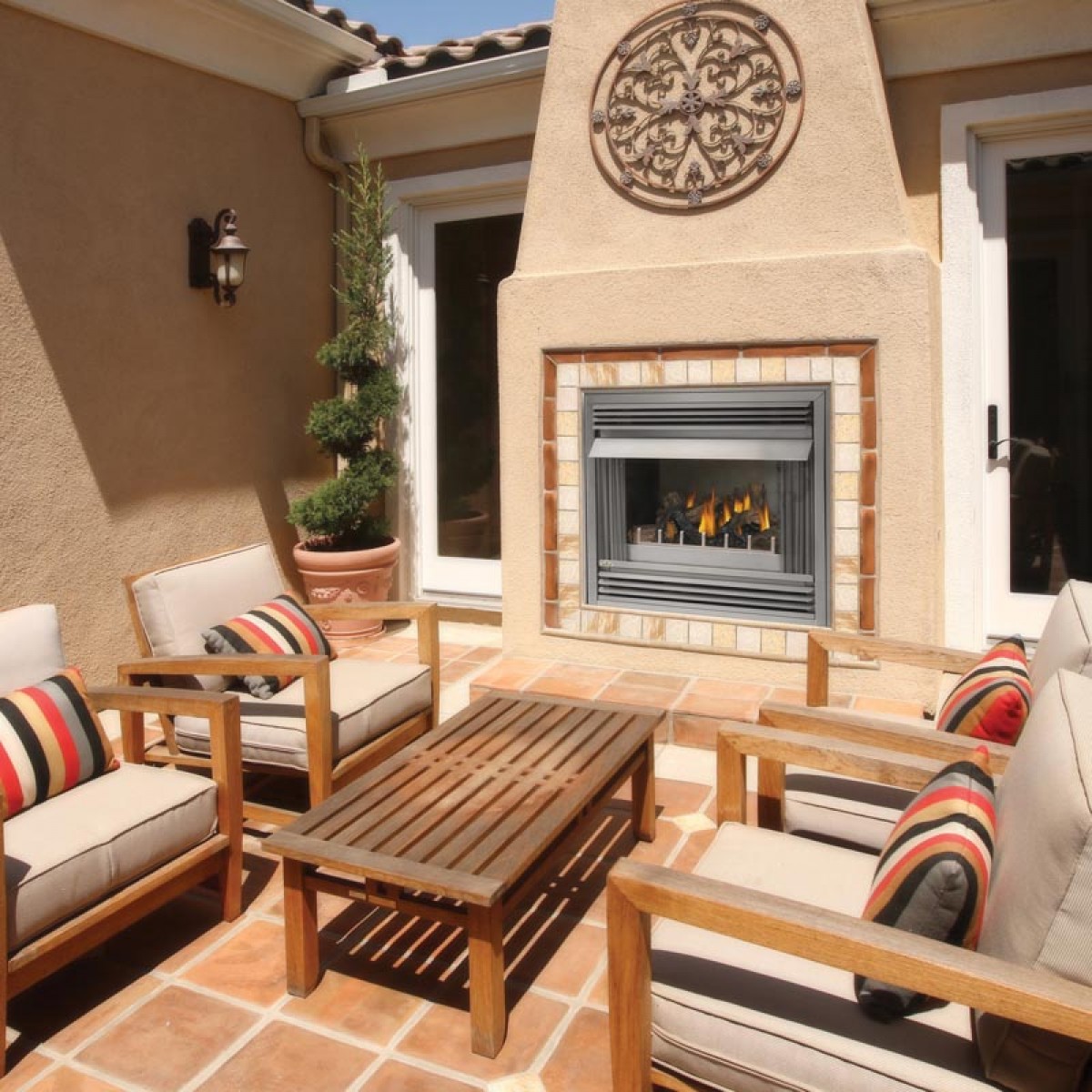
B-vent fireplaces, also known as natural vent fireplaces, are the most similar to traditional wood-burning fireplaces in terms of their venting system. These units rely on a vertical vent, typically running through an existing chimney or flue, to expel combustion gases. Unlike direct vent systems, B-vent fireplaces draw air from inside the home for combustion, which can lead to heat loss and reduced efficiency. However, they offer a more authentic fireplace experience with visible flames and a natural draft. Because they require a vertical vent, B-vent fireplaces are often best suited for homes with existing chimneys or those where the installation of a new vertical venting system is feasible. While B-vent systems may not be as efficient as direct vent models, they provide a traditional aesthetic that many homeowners find appealing. They are a good option for those looking to replicate the ambiance of a wood-burning fireplace while enjoying the convenience of natural gas.

When deciding which natural gas fireplace venting option to choose, it’s important to consider factors such as the desired location, efficiency, installation costs, and safety. Direct vent fireplaces are a solid choice for those seeking a balance of efficiency and safety in a variety of spaces. Ventless systems provide maximum installation flexibility but may require more attention to indoor air quality and local regulations. B-vent fireplaces offer a traditional look and feel but come with lower efficiency and more installation constraints. Consulting with a professional installer or contractor is essential to ensure that the chosen fireplace venting system meets local building codes and fits the homeowner’s heating and design goals. Ultimately, selecting the right venting option will not only affect the performance of the fireplace but also its safety, long-term usability, and how well it integrates into the home’s overall layout.

Gas Fireplace In Basement How To Vent – Mriya.net

IHP Superior DRL6500 Direct Vent Linear Louverless Gas Fireplace
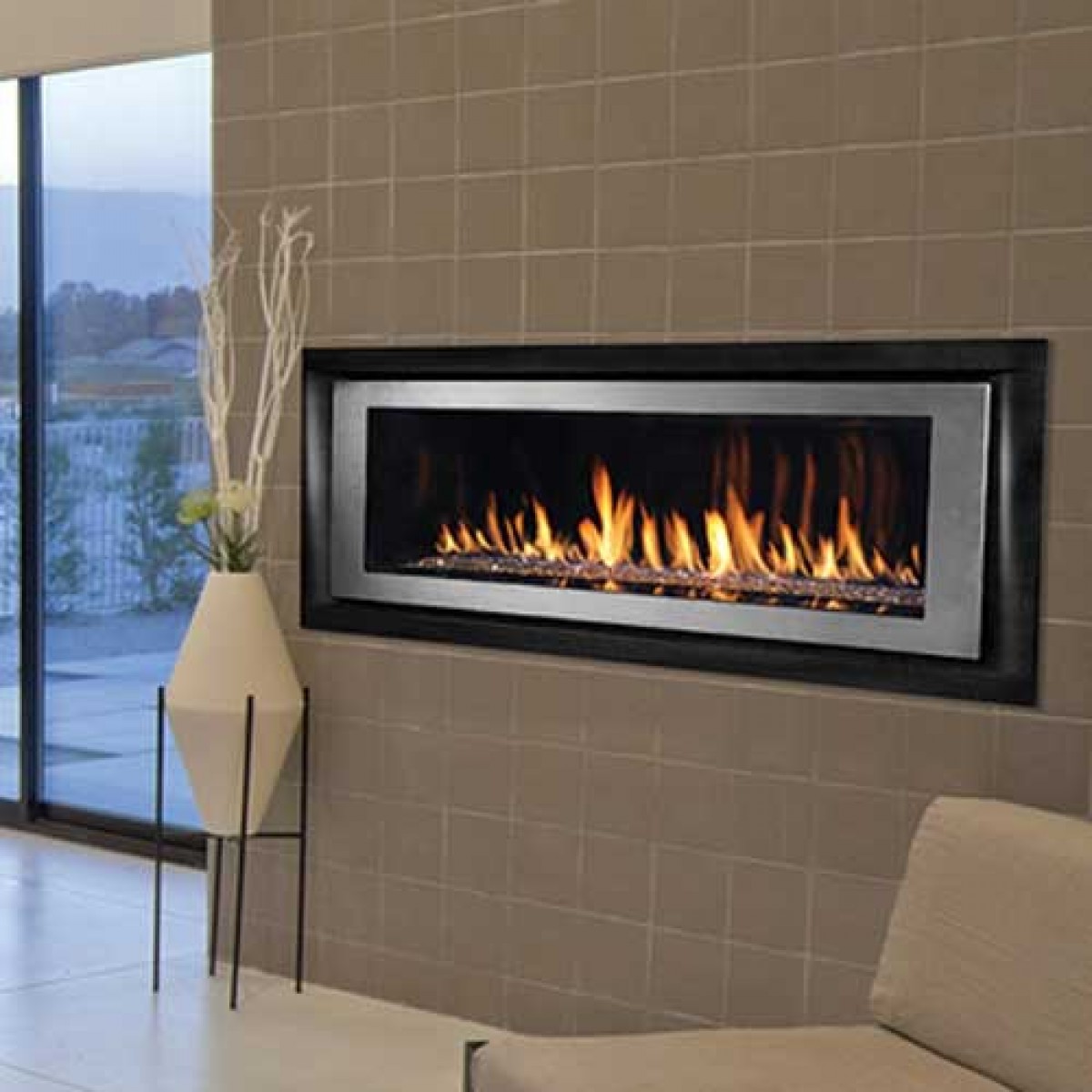
Types of Gas Fireplace Venting Options
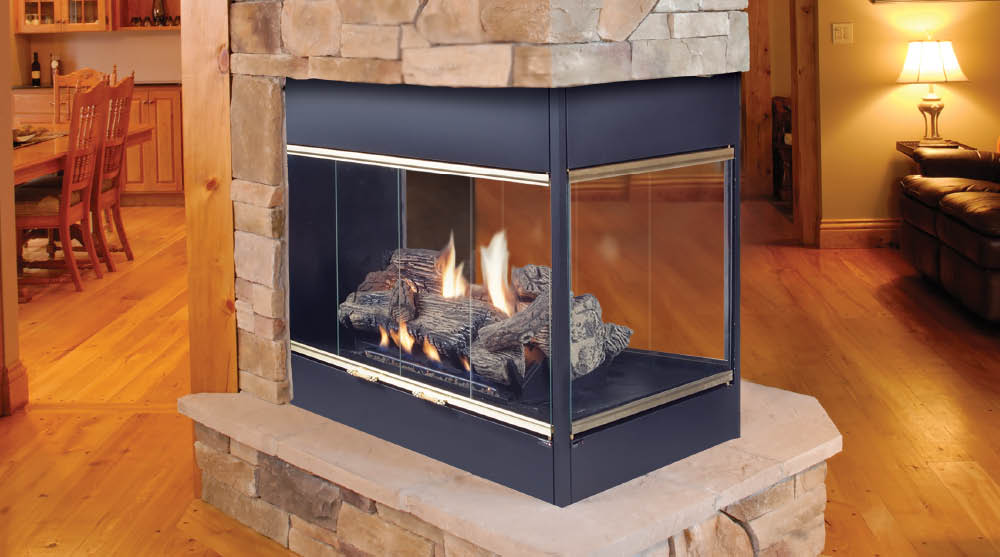
Great Photos Gas Fireplace design Popular There’s only something better than a roaring fire

How to Install a Gas Fireplace: DIY Built In Gas Fireplace

Energy Efficient Fireplaces Natural Gas Appliances CenterPoint Energy
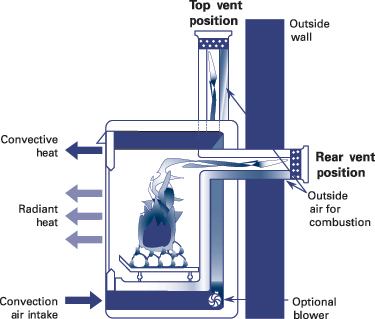
Venting options available Natural Gas Fireplaces Fireplace Pinterest Gas fireplace and

Direct Vent Gas Fireplace Chimney – Mriya.net

Gas Fireplace Installation: Venting for a Home Remodel – YouTube

Related Posts:
- Gas Fireplace No Pilot Light
- Gas Fireplace Crackle Box
- Gas Fireplace Pilot Light Out
- Gas Fireplace Trim Ideas
- How To Remove Gas Fireplace Glass
- Gas Fireplace Insert Parts
- Gas Fireplace Removal
- Gas Fireplace Regulator
- Gas Fireplace Inserts with Blower Fan
- Antique Gas Fireplace Heater
Natural gas fireplaces have become increasingly popular in recent years as a convenient and efficient way to heat homes while adding ambiance and coziness. When choosing a natural gas fireplace, one important factor to consider is the venting options available. There are several different venting options to choose from, each with its own set of benefits and drawbacks. In this guide, we will discuss the various natural gas fireplace venting options to help you make an informed decision for your home.
Direct Vent
One common venting option for natural gas fireplaces is direct vent. Direct vent fireplaces have a sealed combustion chamber that draws air from outside for combustion and expels combustion gases outside through a vent pipe. This type of venting system is highly efficient and can be installed in a variety of locations, including bedrooms and bathrooms. Direct vent fireplaces also do not require a chimney, making them a versatile option for homes without existing chimneys.
One of the main benefits of direct vent fireplaces is their high efficiency. Because they draw air from outside for combustion, they do not compete with other appliances or heating systems in the home for air supply. This helps improve indoor air quality and reduce energy costs. Direct vent fireplaces also provide a steady source of heat without the need for electricity, making them a reliable option during power outages.
Despite their many benefits, direct vent fireplaces do have some drawbacks to consider. The installation costs can be higher than other venting options, as they require a specialized vent pipe system to be installed. Additionally, direct vent fireplaces may not provide as much heat output as other types of fireplaces, so they may not be suitable for larger or colder rooms.
Vent-Free
Another common venting option for natural gas fireplaces is vent-free. Vent-free fireplaces do not require a chimney or external ventilation system; instead, they use a catalytic converter or oxygen depletion sensor to safely burn gas indoors and expel combustion gases into the room. Vent-free fireplaces are highly efficient and can be installed in almost any room in the home.
One of the main benefits of vent-free fireplaces is their ease of installation. Because they do not require external ventilation, they can be easily installed in existing rooms without the need for additional construction or modifications. Vent-free fireplaces also provide a high level of heat output, making them a good choice for heating larger or colder rooms.
However, there are some drawbacks to consider when choosing a vent-free fireplace. One potential concern is indoor air quality; because combustion gases are expelled into the room, there is a risk of carbon monoxide buildup if the fireplace is not properly maintained or ventilated. Additionally, some people may be sensitive to the byproducts of combustion and experience respiratory issues when using a vent-free fireplace.
Natural Draft
Natural draft fireplaces rely on the buoyancy effect created by hot gases rising in order to draw combustion air into the fireplace and expel exhaust gases through a chimney or flue pipe. These fireplaces use natural convection to circulate heat throughout the room and typically have a more traditional look compared to direct vent or vent-free models.
One benefit of natural draft fireplaces is their simplicity; because they rely on natural airflow for ventilation, they do not require any additional mechanical components like fans or blowers. Natural draft fireplaces are also typically more affordable to install than direct vent models, making them a budget-friendly option for homeowners.
However, there are some drawbacks to consider with natural draft fireplaces. Because they rely on natural convection for ventilation, their efficiency may vary depending on factors like chimney height and outdoor temperature. Natural draft fireplaces also require regular maintenance and inspection to ensure proper airflow and ventilation.
Power Vent
Power vent fireplaces use an electric fan or blower to assist with combustion air supply and exhaust gas expulsion. These fireplaces can be installed in locations where traditional chimneys may not be possible, such as homes with limited roof space or complex architectural layouts.
One benefit of power vent fireplaces is their flexibility in terms of installation options. Because they use mechanical ventilation systems, they can be installed in almost any room in the home without the need for extensive modifications or construction work. Power vent fireplaces also offer consistent heat output and high efficiency ratings.
However, there are some drawbacks to consider with power vent fireplaces. They rely on electricity to operate, which means they may not be suitable for use during power outages unless paired with an optional battery backup system. Power vent fireplaces also tend to be more expensive to install compared to natural draft or direct vent models due to their mechanical components.
Common Mistakes to Avoid
When choosing a natural gas fireplace and selecting a ventilation option, it’s important to avoid common mistakes that could impact safety and performance:
1) Neglecting proper maintenance: Regular cleaning and inspection of your fireplace and ventilation system are essential for safe operation.
2) Incorrectly sizing the fireplace: Make sure you choose a fireplace that is appropriately sized for the room you are heating.
3) Ignoring local building codes: Always consult local building codes and regulations before installing a new fireplace.
4) DIY installation: Venting systems should always be installed by trained professionals to ensure proper operation and safety.
Can I install a natural gas fireplace without external ventilation?
While some natural gas fireplaces do not require external ventilation (vent-free models), it’s important to consider factors like indoor air quality before making this decision.
How often should I have my natural gas fireplace inspected?
It’s recommended to have your fireplace inspected at least once per year by a qualified technician to ensure safe operation.
Can I convert my wood-burning fireplace to natural gas?
In many cases, it’s possible to convert an existing wood-burning fireplace to operate on natural gas with the help of a professional installer.
Are there rebates available for installing a high-efficiency natural gas fireplace?
Some utility companies offer rebates or incentives for installing energy-efficient appliances like high-efficiency natural gas fireplaces; check with your local utility provider for more information.
Are there any safety concerns associated with using a natural gas fireplace?
While natural gas fireplaces are generally safe when properly installed and maintained, it’s important to follow manufacturer guidelines and have regular maintenance performed by trained professionals to ensure safe operation.
Choosing the right natural gas fireplace venting option involves considering factors like efficiency, installation costs, maintenance requirements, and safety considerations. By weighing the pros and cons of each type of venting system and avoiding common mistakes during installation and operation, you can enjoy the warmth and ambiance that a natural gas fireplace provides in your home while ensuring safety and efficiency. Remember to consult with a qualified professional before making a decision on which venting option is best for your home. They can provide guidance based on your specific needs and ensure that the installation is done safely and correctly. With the right venting option in place, you can enjoy the comfort and convenience of a natural gas fireplace for years to come.